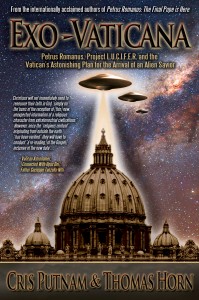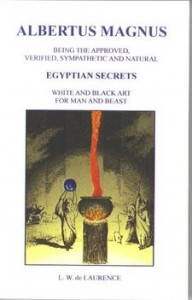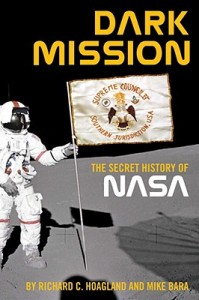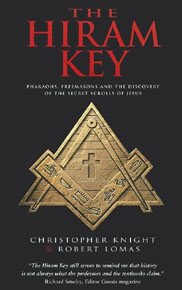By Cris D. Putnam (continued from part 2)
 As documented in our former work, Petrus Romanus, the Middle Ages marked a Faustian bargain between the Roman Church and the Carolingian dynasty that served to suppress biblical theology and promote the papal juggernaut. In that work, we discussed the resulting years of darkness (757–1046 AD), ignominiously titled the “Pornocracy” or “Dark Age,” by asserting that “demonic weirdness defines the era.”[1] In light of that, a bit of arcane lore popularized by Jacques Vallée concerning a Spanish-born priest and archbishop of Lyon, Agobard of Lyon (779–840 AD), seems pertinent. Agobard mentions a folk belief concerning “a certain region, which they call Magonia, whence ships sail in the clouds.”[2] Given the historical context, we find the timing of this belief’s emergence to be telling. Beginning at this time, there was a developing acceptance that people were visiting the Earth from other worlds in flying ships. The account speaks of four visitors:
As documented in our former work, Petrus Romanus, the Middle Ages marked a Faustian bargain between the Roman Church and the Carolingian dynasty that served to suppress biblical theology and promote the papal juggernaut. In that work, we discussed the resulting years of darkness (757–1046 AD), ignominiously titled the “Pornocracy” or “Dark Age,” by asserting that “demonic weirdness defines the era.”[1] In light of that, a bit of arcane lore popularized by Jacques Vallée concerning a Spanish-born priest and archbishop of Lyon, Agobard of Lyon (779–840 AD), seems pertinent. Agobard mentions a folk belief concerning “a certain region, which they call Magonia, whence ships sail in the clouds.”[2] Given the historical context, we find the timing of this belief’s emergence to be telling. Beginning at this time, there was a developing acceptance that people were visiting the Earth from other worlds in flying ships. The account speaks of four visitors:
One day, among other instances, it chanced at Lyons that three men and a woman were seen descending from these aerial ships. The entire city gathered about them, crying out that they were magicians and were sent by Grimaldus, Duke of Beneventum, Charlemagne’s enemy, to destroy the French harvests.[3]
The extraterrestrials were called “sylphs,” and these four contactees were called “ambassadors to the sylphs” (according to Nicolas Pierre-Henri, the abbot of Villars, France). The priest did his best to dispel the belief, and the citizens, while not entirely convinced, let the four ambassadors go free. The esoterica attributed to the abbot of Villars, The Count of Gabalis: Secret Interviews on Science (1670), supports the idea that the sylphs were indeed real and the contactees often achieved great success and widespread acclaim.[4] Unfortunately, at this time, many in the priesthood were also involved in the occult arts and were not well trained in biblical theology.
It was the rise of scholasticism, largely inspired by the translation of the ancient Greek philosophers into Latin, that revived scholarly pursuits. An early example is from Saint Albertus Magnus (1193–1280), who wrote, “Since one of the most wondrous and noble questions in nature is whether there is one world or many, a question that the human mind desires to understand per se, it seems desirable for us to inquire about it.”[5] He wrote a complete treatise on astrology and astronomy called Speculum Astronomiae (“The Mirror of Astronomy”) and a treatise, De Mineralibus (“The Book of Minerals”), which dealt with astrological talismans made from minerals.That he was an occult practitioner is laid bare in his assertion that “the [science of talismans] cannot be proved by physical principles, but demands a knowledge of the sciences of astrology and magic and necromancy, which must be considered elsewhere.”[6] Magnus discusses various astrological talismans, describes how to make them, and attempts to distinguish between demonic and natural magical powers of the heavens.
Even so, many of his contemporaries accused Magnus of being in league with the devil. Occult tradition holds Albertus Magnus Grimoire[/caption]that he discovered the philosopher’s stone and became wealthy from its gold.[7] Nevertheless, he was “beatified” in 1622, meaning that the Catholic Church marked his entrance into heaven and endorsed his alleged postmortem capacity to intercede on behalf of individuals who pray in his name (a practice we have argued amounts to necromancy).[8] On December 16, 1931, Pope Pius XI canonized him as the patron saint of the sciences and honored him as a doctor of the Church, one of only thirty-five persons so privileged. It was his famous student, Thomas Aquinas, who would devote more specific attention to other worlds.
Aquinas was convinced biblical truth could be reconciled with Aristotle’s cosmology. Accordingly, he sought to synthesize the Aristotelian science in On the Heavens with the Scriptures. Thus, he necessarily denied the existence of other worlds. In his influential work, Summa Theologica, he argued in this fashion:
Objection 1. It would seem that there is not only one world, but many. Because, as Augustine says (QQ. LXXXIII., qu. 46), it is unfitting to say that God has created things without a reason. But for the same reason that He created one, He could create many, since His power is not limited to the creation of one world; but rather it is infinite, as was shown above (Q. XXV., A. 2). Therefore God has produced many worlds.…
Reply Obj. 1. This reason proves that the world is one because all things must be arranged in one order, and to one end. Therefore from the unity of order in things Aristotle infers (Metaph. xii., text. 52) the unity of God governing all; and Plato (Tim.), from the unity of the exemplar, proves the unity of the world, as the thing designed.[9]
Aquinas argued God’s power is seen in unity and order. One can readily see that he based his argumentation on Aristotle’s cosmology. Of course, Aristotle was fundamentally mistaken in his doctrine of natural place. Even so, these arguments stood unchallenged until the heresy hunters of the Inquisition turned their glance his way.
Surprisingly, it was the inquisitors who paved the way for ET belief. In 1277, Etienne Tempier, the bishop of Paris, issued a condemnation of 219 theological propositions that were said to be “true according to philosophy, but not according to the Catholic faith.”[10] Church historians believe Tempier was concerned that teachers, like Aquinas, accepted the pagan philosopher Aristotle’s views based on their internal logic rather than agreement with church doctrine. Of these 219 heretical propositions, number 34 was “that the first cause [God] could not make several worlds.”[11] The disapproval was based on the idea that such a denial encroached upon the doctrine of divine omnipotence. Of course, this objection seemed to overlook the difference between what God could do and would do, a distinction that was not lost on theologians like William of Ockham (1290–1349) and Nichole Oresme (1320–1382), who argued that although God certainly was capable, He probably did not create other worlds. Even so, the existence of other worlds was now theologically respectable, and the stage was set for more radical divergence from what for centuries had been considered orthodoxy.
See: http://www.exovaticana.com/
[1] Thomas Horn and Cris D. Putnam, Petrus Romanus: The Final Pope Is Here (Crane MO: Defender, 2012), 208.
[2] Agobard, Liber De Grandine Et Tonitruis, chapter II cited in Abbé de Montfaucon de Villars, Comte de Gabalis, ou Entretiens sur Us Sciences Secretes, English ed (Paterson, NJ: The News Printing Company, 1914), 194.
[3] Ibid.
[4] “Nevertheless, as they escaped with their lives they were free to recount what they had seen, which was not altogether fruitless for, as you will recall, the age of Charlemagne was prolific of heroic men. This would indicate that the woman who had been in the home of the Sylphs found credence among the ladies of the period and that, by the grace of God, many Sylphs were immortalized. Many Sylphids also became immortal through the account of their beauty which these three men gave; which compelled the people of those times to apply themselves somewhat to Philosophy; and thence are derived all the stories of the fairies which you find in the love legends of the age of Charlemagne and of those which followed.” Villars, Comte de Gabalis, 193.
[5] Albertus Magnus, as quoted in Steven J. Dick, Plurality of Worlds: The Extraterrestrial Life Debate from Democritus to Kant (Cambridge University Press, 1984), 23.
[6] Albertus Magnus, De Mineralibus, translation by Dorothy Wyckhoff; from The Book of Minerals, (Oxford, 1967); viewable here: “Albertus Magnus on Talismans,” Renaissance Astrology, last accessed January 9, 2013, http://www.renaissanceastrology.com/albertusmagnustalisman.html.
[7] Julian Franklyn, A Survey of the Occult (London: Electric Book Company, 2005), 29.
[8] Thomas Horn and Cris D. Putnam, Petrus Romanus, 307.
[9]Saint Thomas Aquinas and Fathers of the English Dominican Province, Summa Theologica, Translation of: Summa Theologica, I q.47 a.3 obj. 1; ad 1 (Bellingham, WA: Logos Research Systems, Inc., 2009).






